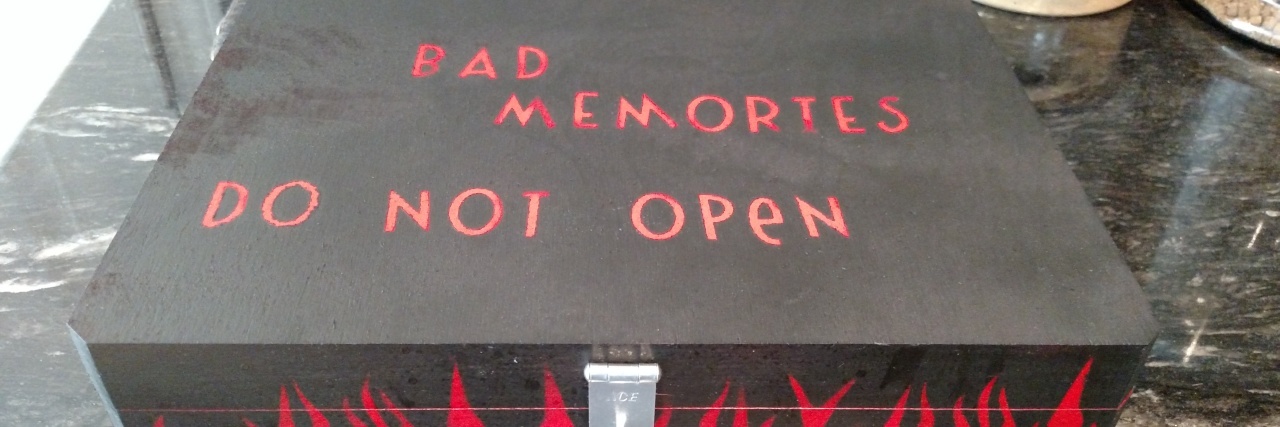How This ‘Bad Memory Box’ Helps Us Deal With Traumatic Memories
Editor's Note
If you have experienced sexual or emotional abuse, the following post could be potentially triggering. You can contact the Crisis Text Line by texting “START” to 741741 or contact The National Sexual Assault Telephone Hotline at 1-800-656-4673.
Containment. What is it?
Containment in psychology involves taking a distressing thought or memory and placing it safely somewhere in your mind until you are able to come back to it and deal with it at an appropriate time. Containment is an excellent way to deal with trauma memories and obsessive thoughts.
I have dissociative identity disorder (DID) and, recently, a young part was talking to our therapist about a trauma memory that he said he wasn’t allowed to detail and process with her just yet. This part stated that it was upsetting him to not talk about it, that it was playing in front of his eyes in flashback form, that he couldn’t stop thinking about it. I was very pleased to hear our new therapist work with this part on how to safely contain the memory until it could be properly dealt with.
She asked him to think of a safe object that was airtight and which locks — something like a vault or safe and to picture it in his mind. She then asked him to put the memory into the safe object of his choosing and to shut the lid and lock the container. She instructed him to leave it there on a shelf in our mind until the time we can safely come back to it, with permission from all inside, and talk through this distressing event.
This young part thought long and hard about what kind of container worked for him, even thinking at first to draw from the memory and take an object from it. He decided not to have the object in his mind — actually to not have the memory stay in his head at all. Ultimately, he chose to use a container from real life.
Years ago, we made a “bad memory box” in which to store processed memories and other distressing things. We took a simple wooden box, painted it, and installed a hasp and latch lock with a key. When something is too much for us to handle — when memories are too big or too painful to hang on to — we put them in the Bad Memory Box. The box and the memories it holds lives safely in the garage — not in our head.
So, this young part decided to make a rough pencil drawing of the images he was seeing in his head and place them in the Bad Memory Box until he can take the box into therapy, open it, take the memory out and talk it through. And so far, it’s been very effective. He’s satisfied because while the memory is still a very real thing, he doesn’t have to remember it with the front part of his brain; it’s being held for him safely until the time we can process it correctly.
Image via contributor.

